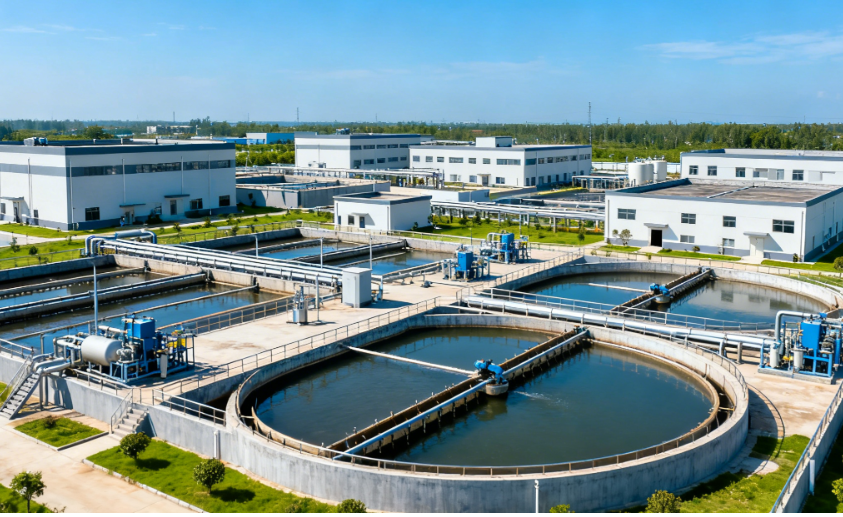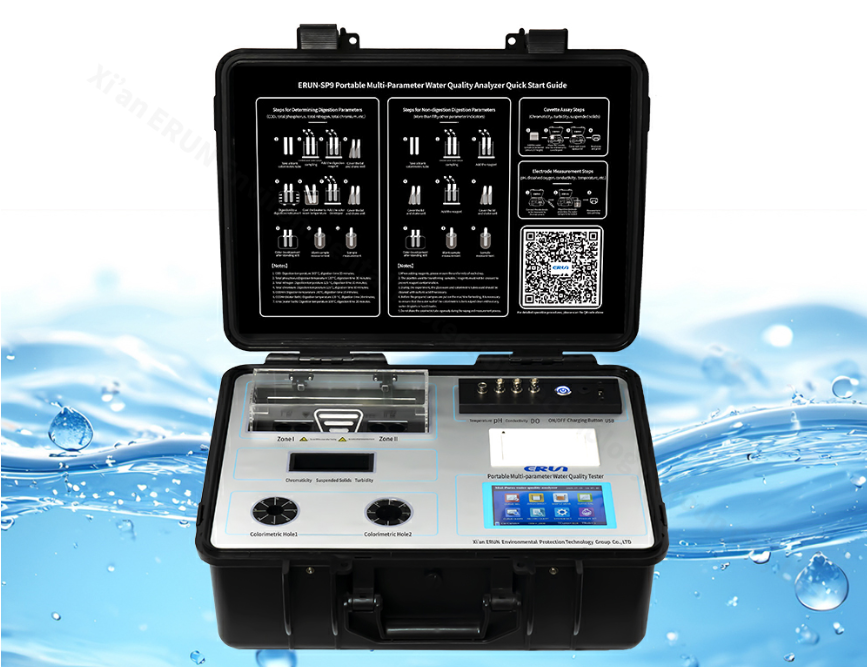Understanding the relation between conductivity and pH in water is essential for anyone involved in water treatment, environmental monitoring, laboratory analysis, aquaculture, or industrial processing. These two parameters are often tested together, yet many users do not fully understand how they influence each other—or why accurate, real-time measurement is critical for reliable water quality management.
This article explains how conductivity and pH are connected, why their relationship matters, and how modern instruments like the ERUN-SP9 multi-parameter water quality tester simplify precise monitoring across various water applications.
Conductivity indicates how well water can conduct an electrical current. The more dissolved ions (such as sodium, chloride, calcium, magnesium, nitrates, and sulfates), the higher the conductivity.
Thus, conductivity directly reflects total ionic concentration.
pH describes the concentration of hydrogen ions (H⁺) in water.
Low pH = more hydrogen ions = acidic
High pH = fewer hydrogen ions = alkaline
Since pH itself is based on ion activity, any factor that affects ionic composition can influence pH—and vice versa.
This creates a natural connection between the two parameters.
When acids or bases are added to water, they dissociate into ions.
Adding acid releases H⁺ and A⁻
Adding base releases OH⁻ and cations
These new ions increase conductivity, even when pH changes only slightly.
Example:
Adding just a small amount of hydrochloric acid (HCl) significantly increases conductivity because H⁺ and Cl⁻ are highly mobile ions.
High-conductivity water typically contains many dissolved ions that act as buffers.
This means:
pH changes more slowly
An additional acid or base has a reduced effect
Low-conductivity water, by contrast, has weak buffering capacity, making pH extremely unstable.
In wastewater treatment, drinking water processing, aquaculture, and chemical manufacturing, ionic composition constantly changes.
As ionic loads rise, conductivity shifts often predict pH drift before it occurs.
This is why professionals always measure pH and conductivity in parallel.

In industrial systems, small pH fluctuations can cause scaling, corrosion, or biological imbalance. Conductivity patterns often help detect these issues early—before pH reaches a critical point.
In wastewater plants and drinking water facilities:
pH affects coagulation, precipitation, and disinfection
Conductivity reflects total dissolved solids, affecting treatment performance
Operators rely on both values to adjust dosing and maintain compliance.
Fish and shrimp are sensitive to sudden pH swings. Conductivity monitoring helps predict when pH might shift due to ionic buildup, ensuring a stable environment.
In research, low-conductivity water is used as a baseline for precise chemical analysis. Understanding the pH-conductivity relationship ensures samples remain uncontaminated.
High-precision instruments are essential because:
Conductivity reacts instantly to ionic changes
pH can drift if the water has a low ionic strength
Temperature affects both parameters
Modern multi-parameter meters address these issues through the integration of sensors and automatic temperature compensation.
The ERUN-SP9 is designed for professionals who require accurate, multi-parameter water analysis in a single device. It directly addresses the challenges of measuring conductivity and pH simultaneously.
16-channel advanced optical design
Detects over 60 water quality parameters, including:
pH
Conductivity
TDS
Salinity
Dissolved oxygen
Water temperature
Modular parameter configuration so users can freely select what they need
Suitable for laboratories, wastewater plants, environmental monitoring, aquaculture, beverage production, chemical plants, and more

ERUN-SP9 ensures both sensors read under identical temperature conditions, reducing typical cross-parameter error.
Many meters struggle in ultra-pure water. ERUN-SP9’s optimized electrode design prevents pH drift and maintains stable conductivity readings.
By watching conductivity trends, operators can identify ionic accumulation early—before pH moves out of safe range.
Whether monitoring industrial effluents or aquaculture ponds, ERUN-SP9 provides consistent results.
A manufacturing facility using a closed-loop cooling system experienced corrosion issues. Traditional pH measurements appeared normal, yet conductivity increased sharply over several weeks.
Using the ERUN-SP9, technicians discovered:
Conductivity is rising due to dissolved ions from corrosion
Ionic accumulation lowers buffering capacity
pH beginning to drop despite stable chemical dosing
By acting early, the plant stabilized pH, prevented equipment damage, and avoided costly downtime.
This real-world example highlights how conductivity can warn operators before pH becomes a visible problem—demonstrating the practical value of understanding their relationship.
The relationship between conductivity and pH in water is fundamental. One reflects overall ionic strength, while the other reflects hydrogen-ion activity, and changes in either parameter can influence the other.
For reliable water quality control, accurate, multi-parameter instrumentation is essential. The ERUN-SP9 offers professionals a powerful, flexible, and precise solution for simultaneously monitoring pH, conductivity, and more than 60 additional water quality indicators.
Whether you're in water treatment, environmental monitoring, laboratory research, aquaculture, or industrial operations, understanding the conductivity-pH–pH relationship—and measuring it correctly—will significantly improve your results.